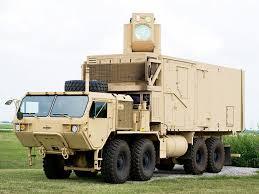The Dawn of Directed Energy: Military Laser Systems and the Future of Warfare
The battlefield is evolving, and the hum of traditional armaments is increasingly being joined by the silent, swift power of directed energy. The military laser systems market, projected to surge from USD 5.70 billion in 2023 to a staggering USD 10.20 billion by 2030, with a robust CAGR of 8.67%, is a testament to this transformative shift. This growth isn't just about numbers; it signifies a fundamental change in how nations perceive and prepare for future conflicts.
Laser systems, once the realm of science fiction, are now a tangible, operational reality. Their appeal lies in a unique combination of speed, precision, and scalability. Unlike conventional projectiles, lasers travel at the speed of light, effectively eliminating lead time and dramatically reducing the window for countermeasures. This inherent speed translates to pinpoint accuracy, minimizing collateral damage and maximizing the effectiveness of engagement.
Furthermore, the scalability of laser systems offers a distinct advantage. By adjusting power levels, a single platform can be used for a variety of missions, from disabling sensitive electronic components to neutralizing incoming threats. This versatility is crucial in today's complex and rapidly evolving threat landscape.
Drivers of Market Expansion:
Several factors are fueling the explosive growth of the military laser systems market growth
- Countering Emerging Threats: The proliferation of drones, hypersonic missiles, and other advanced threats has created a critical need for rapid-response, high-precision defense systems. Lasers offer a compelling solution, capable of engaging these targets with unparalleled speed and accuracy.
- Reduced Cost Per Engagement: While the initial investment in laser technology can be substantial, the cost per engagement is significantly lower compared to traditional munitions. This is particularly relevant in scenarios involving high-volume, low-cost threats like drone swarms.
- Minimizing Logistics Footprint: Lasers rely on electricity, rather than bulky and expensive munitions. This reduces the logistical burden on military forces, simplifying deployment and sustainment.
- Technological Advancements: Continuous advancements in laser technology, including increased power output, improved beam quality, and miniaturization, are making these systems more effective and deployable across a wider range of platforms.
- Increased Defense Spending: Rising geopolitical tensions and the need to modernize military capabilities are driving increased defense spending globally, with a significant portion allocated to advanced technologies like laser systems.
Applications Across Domains:
The applications of military laser systems span across all domains of warfare:
- Air Defense: High-energy lasers are being developed to counter aerial threats, including drones, cruise missiles, and even ballistic missiles in their terminal phase.
- Naval Warfare: Laser systems are being integrated into naval platforms for self-defense, counter-piracy operations, and engagement of small, fast attack craft.
- Ground-Based Systems: Ground-based lasers are being deployed for counter-unmanned aerial systems (C-UAS) missions, point defense of critical infrastructure, and even tactical engagements.
- Space-Based Applications: While still in its early stages, research is underway to explore the potential of space-based laser systems for missile defense and space domain awareness.
Challenges and Considerations:
Despite their immense potential, laser systems face certain challenges:
- Atmospheric Absorption: Atmospheric conditions, such as rain, fog, and dust, can affect the performance of laser beams, limiting their effective range and power.
- Thermal Management: High-power lasers generate significant heat, requiring robust thermal management systems to ensure continuous operation.
- Power Requirements: Deploying high-energy lasers requires substantial power generation capabilities, which can be a challenge in certain operational environments.
- Ethical Considerations: The use of directed energy weapons raises ethical concerns regarding potential blinding effects and the need for clear rules of engagement.
The Road Ahead:
The military laser systems market outlook is poised for significant growth in the coming years. As technology matures and costs decline, we can expect to see wider adoption of these systems across a range of military platforms. The development of more compact, efficient, and powerful lasers will further enhance their capabilities and expand their applications.
The integration of artificial intelligence and machine learning will also play a crucial role in improving the effectiveness of laser systems. AI-powered target recognition and tracking, combined with automated engagement capabilities, will enable faster and more precise responses to emerging threats.
In conclusion, military laser systems are not just a futuristic concept; they are a rapidly evolving reality that is reshaping the landscape of modern warfare. As nations continue to invest in this transformative technology, the dawn of directed energy is upon us, ushering in a new era of military capabilities.
